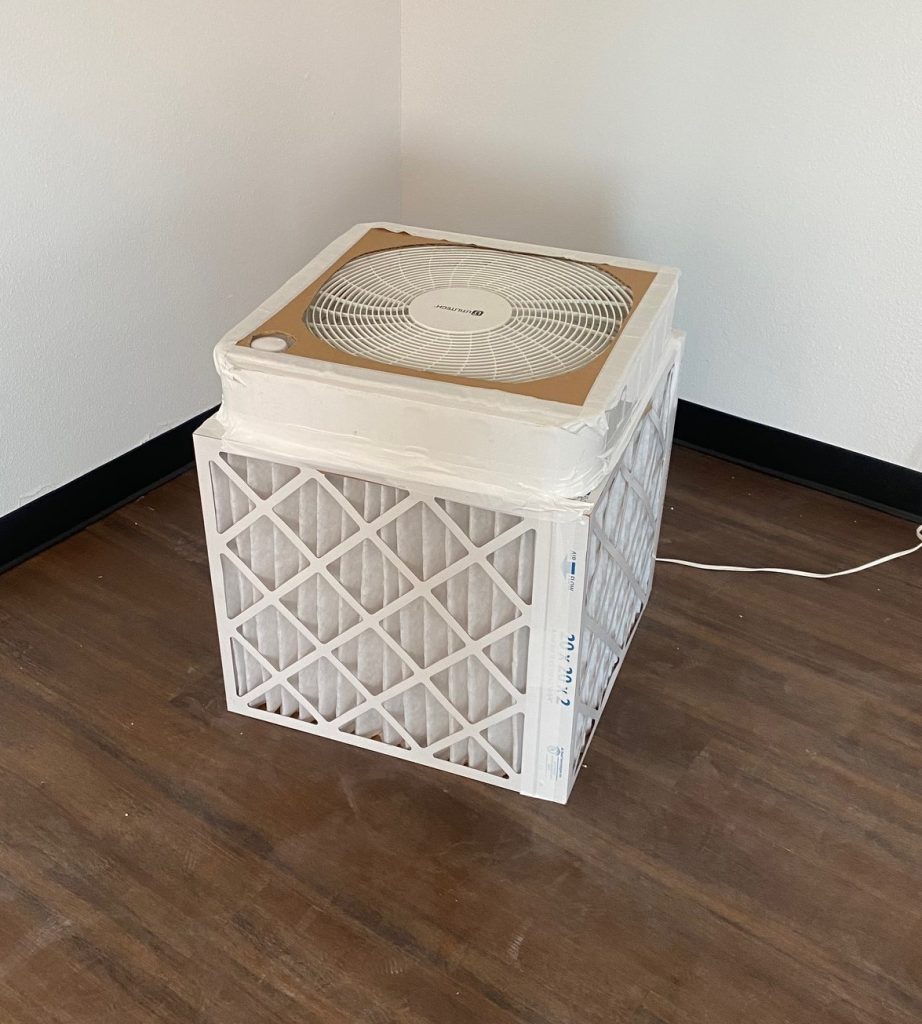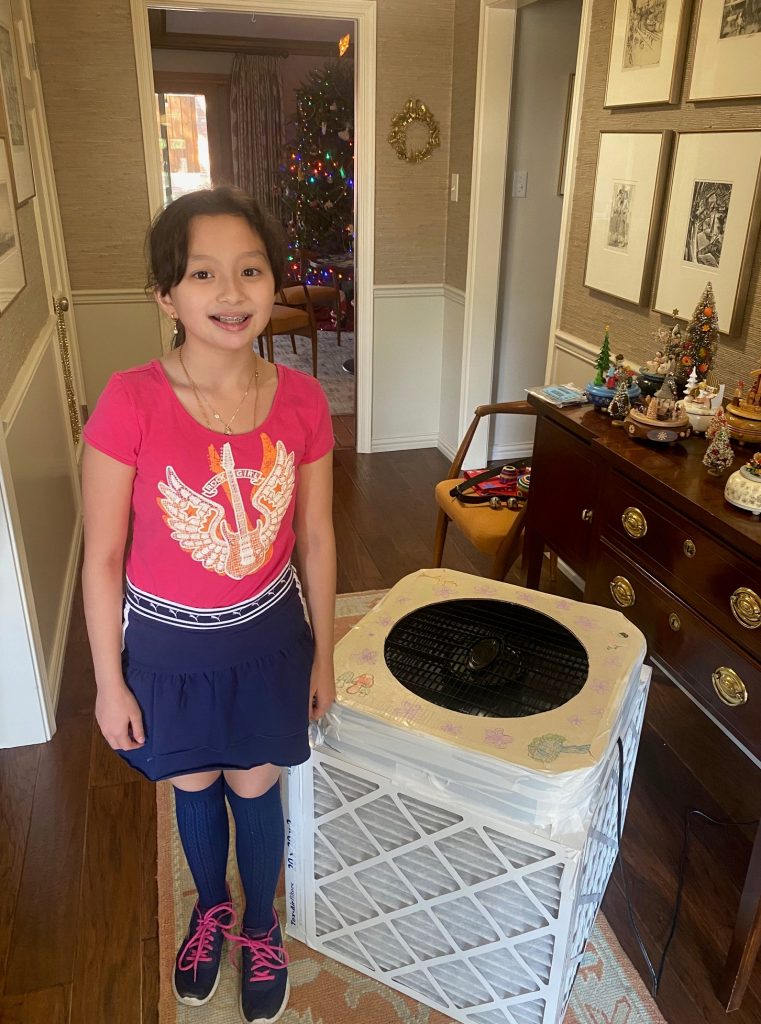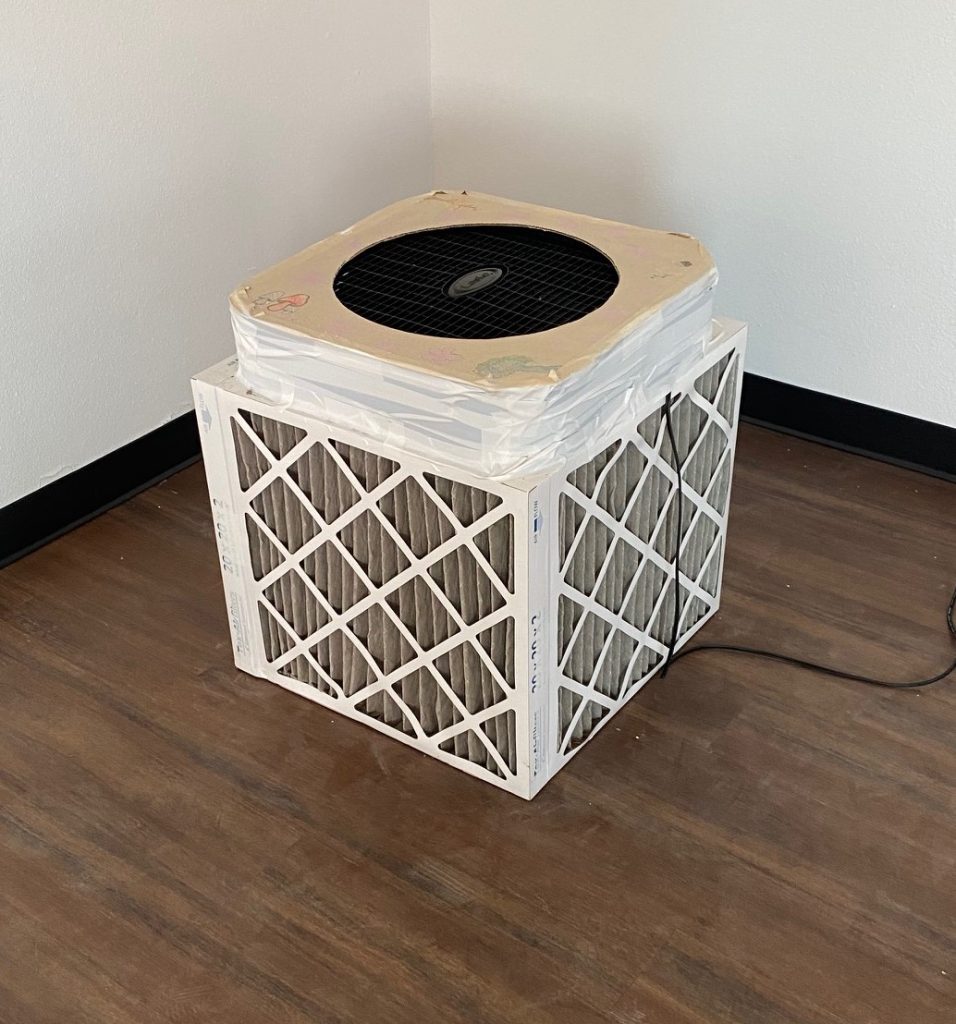By JIm Rosenthal
The most frequently asked question we receive on the Corsi-Rosenthal Box is: “When do you change the filters?” Of course – the answer is – it depends. There are a number of variables that need to be considered like – the quantity and type of particle exposure, the type of filters used, run-time and fan speed. In a heavy wildfire smoke situation, the filters might last two months. For normal use in a home, they should last a minimum of 6 months. In a classroom, if the CR boxes are only run when students and/or teachers are present, 6-10 months between filter changes would be OK.
In my opinion, the biggest mistake people make is that they change the filters too soon. The filters “look” dirty, so they must not be working effectively. In most cases, they have plenty of useful life left. In order to provide some frame of reference for this decision, I decided to do a test with what appears to be a “well-used” filter.
The test was conducted in an 18’X20’X8′ chamber (actually a vacant office). Test particles were generated by an ultrasonic humidifier using tap water and salt. We used the Dylos particle counter measuring particles at 0.5 um. This size is of concern for both viruses and wildfire smoke. Baseline particle numbers were started at approximately the same level. A “control” test was conducted to establish natural decay. Air cleaners tested were: 1. A CR Box using a Utilitech box fan and 4 – new 20X20X2 MERV 13 filters; 2. A commercial HEPA filter and 3. A CR Box using 4 – 20X20X2 – 10-month-old – 20X20X2 MERV 13 filters. (This box was built during a Christmas break in 2021 with my 10-year-old helper – Vanessa. For the last 10 months it has been running in our employee breakroom connected to our factory.)




Discussion: The 10-month-old CR box is still performing well. It is not as effective as the CR box with new filters. However, it is about even with the HEPA air cleaner and still provides a 73% reduction in 0.5 um particles over the control. It should continue at this level for at least a few more months. Despite the fact that there is substantial filter cake build up on these filters, there is sufficient air flow through the filters to keep removing large amounts of particles. The combination of this air flow and high filter efficiency continues to provide excellent filter effectiveness.